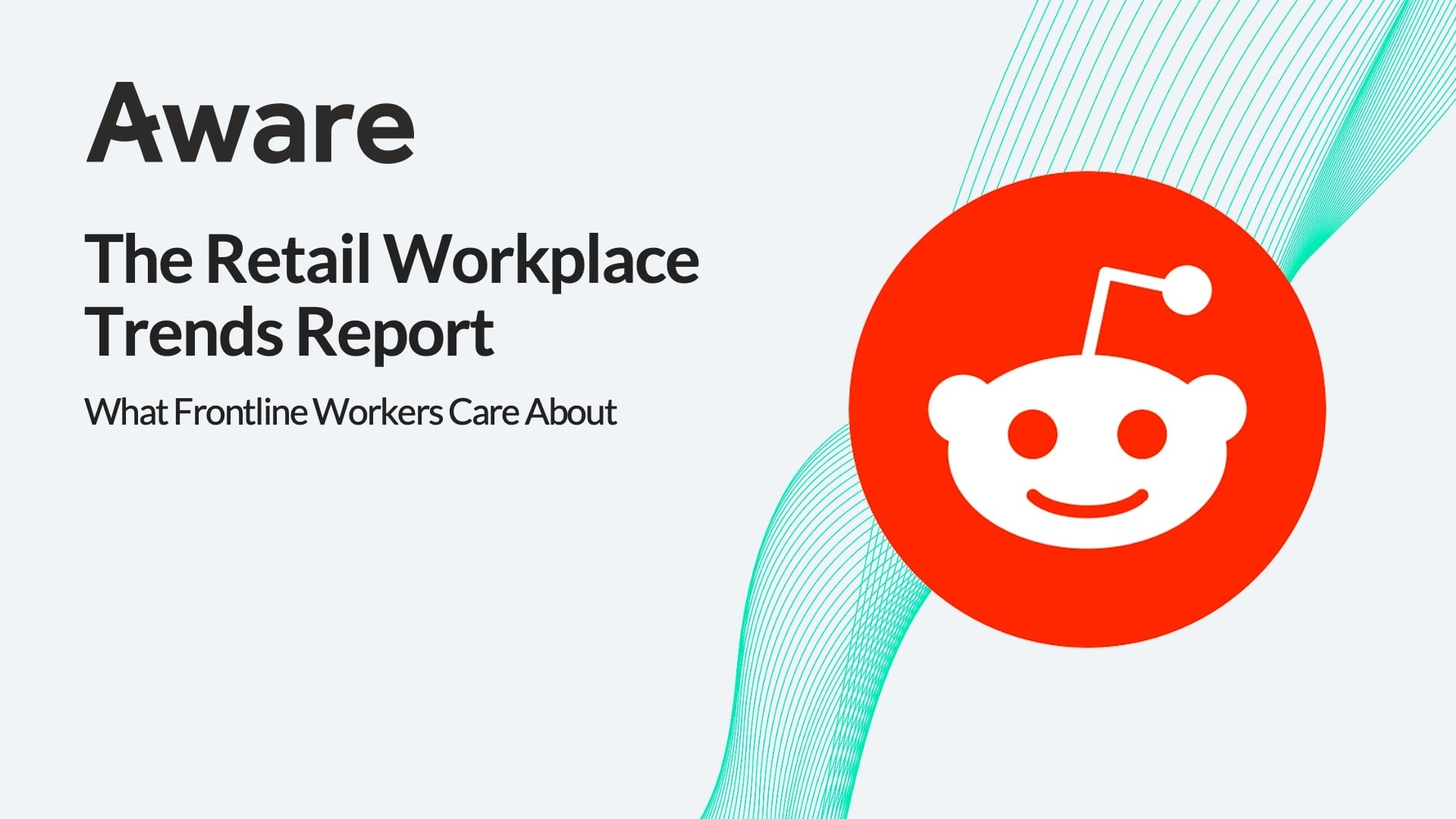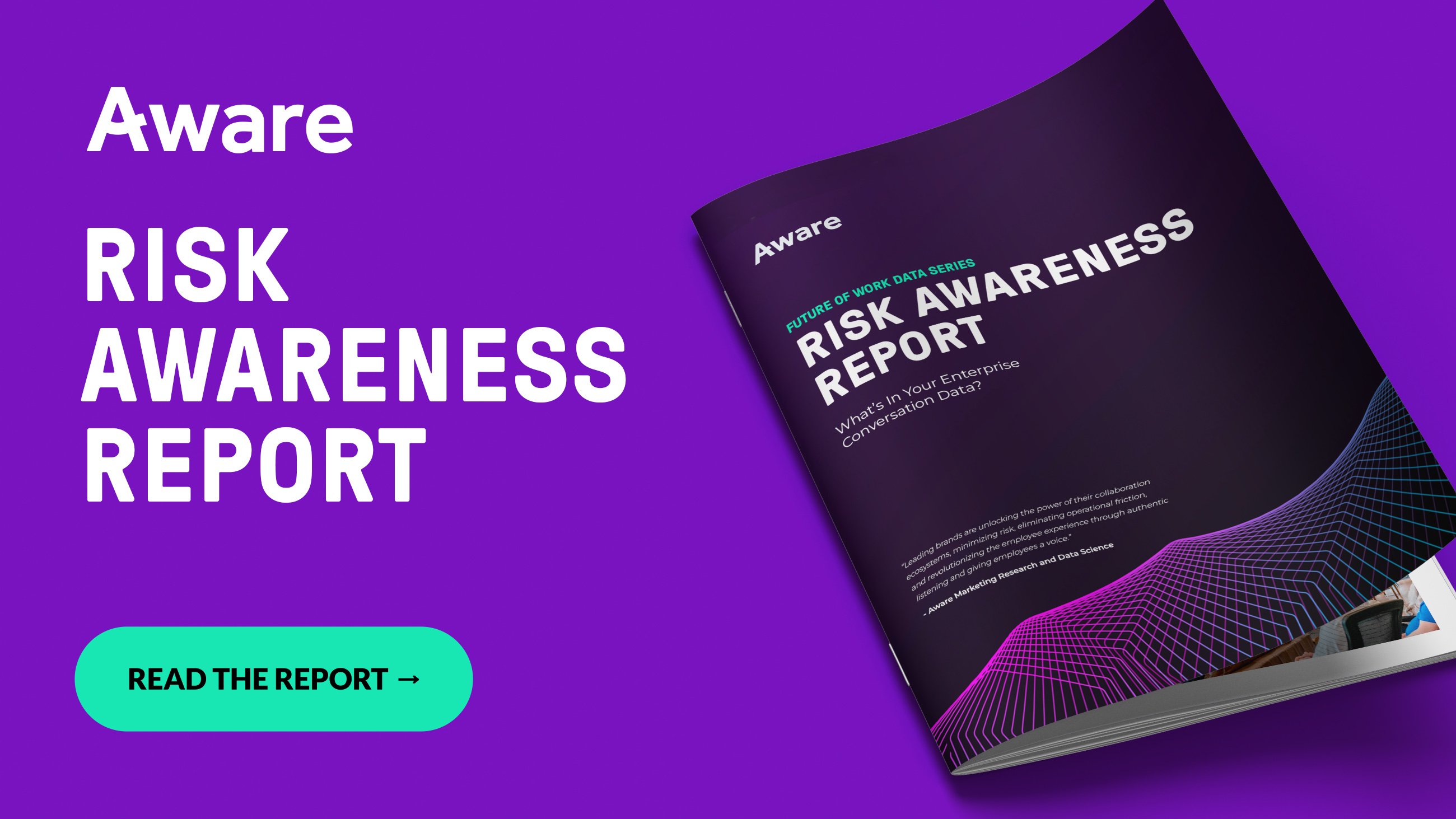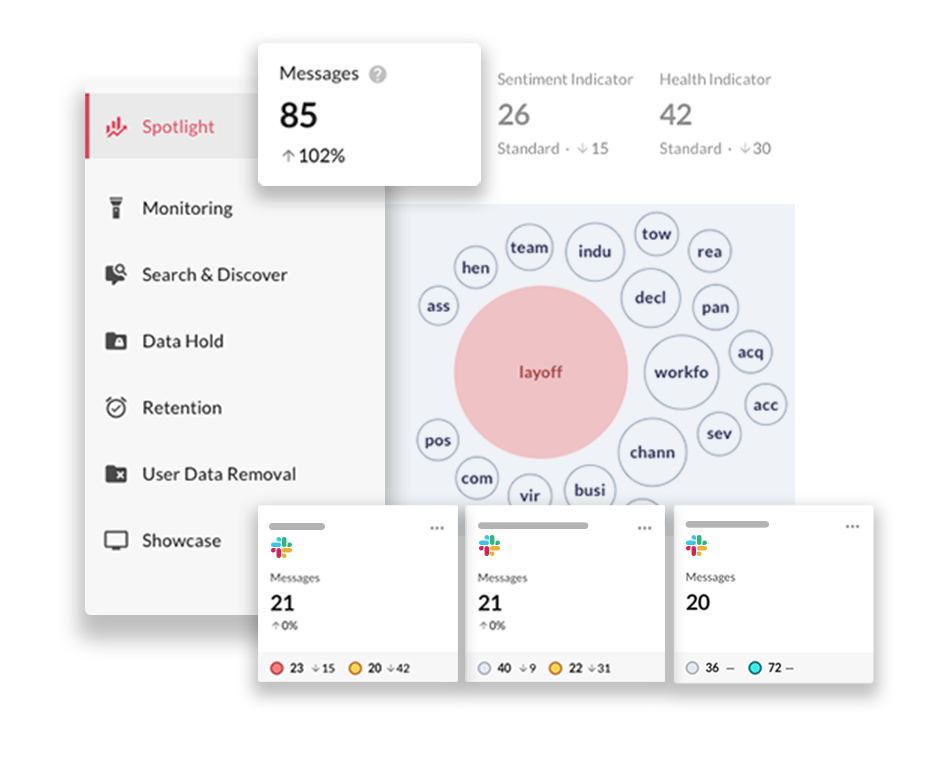Employee Sentiment Analysis: Use Cases, Benefits & Tools
by Aware
First Published Jun. 2018. Updated Jun. 2024.
Employee sentiment analysis is the evaluation and interpretation of employee emotions, opinions, attitudes, and overall comfort within an organization. Surveys have been the traditional tool for employee listening, but employee sentiment analysis software is becoming a much more effective and multi-faceted sentiment analysis tool in today’s business world.
Companies want to understand their workforce’s overall mood and concerns, identify patterns, and pinpoint how to improve employee morale while gaining valuable insights into what affects employee engagement, job satisfaction, and well-being.
What employee sentiment analysis is not is spying on employees to catch wrongdoing, punish employees, or invade privacy. Ethical companies are transparent about their sentiment data gathering, and they obtain their employees’ consent. They’re focused on creating a happier workplace, and an environment of spying and distrust doesn’t foster that outcome.
Contents
- 6 benefits of employee sentiment analysis
- Sentiment analysis surveys vs software: Which is better?
- Why surveys paint an inaccurate picture
- How sentiment analysis software works (and why it's superior)
- Aware: The industry-leading enterprise collaboration security & insights solution
- Conduct your own employee sentiment analysis
6 benefits of employee sentiment analysis
Understanding employee sentiment can help organizations predict and shape the ebb and flow of their workplace’s culture. This brings many benefits to these workplaces.
- Keep a pulse on the mood: Employee sentiment analysis gives an organization a window into the overall mood and concerns of their workforce, which helps them continue the processes and policies that are working, and improve or discard ideas that aren’t working. This increases productivity, efficiency, and overall effectiveness of the organization.
- Deepen employee engagement: Companies can pinpoint precise areas where improvement is possible, which helps to deepen employee engagement, workplace culture, and employee satisfaction, leading to better employee retention and saving onboarding costs in the long run.
- Retain top talent: Managers can address issues employees have proactively and eliminate pain points to keep top talent happy and actively engaged with the organization rather than seeking employment elsewhere.
- Encourage open communication: Employee sentiment analysis encourages open communication and transparency between employees and leadership. Employees actively see how much their opinions matter.
- Show employees’ opinions matter: When employee sentiment analysis is done properly, enterprises can get an accurate picture of employee opinions and help address concerns in near real-time rather than months later with outdated information.
- Boost workplace culture: When leadership actively works to keep a positive workplace culture and boost morale, employees respond well, which inherently improves their productivity and employee performance, and helps raise retention rates.
Employee sentiment analysis is a powerful tool organizations can use to engage with their employees, gain insight into employees’ opinions and outlooks, learn techniques for better communication, and make informed decisions to enhance the overall workforce experience and performance management.

Revealed: The scale of human behavior risk in collaboration tools
Sentiment analysis surveys vs software: Which is better?
Traditionally, HR and collaboration teams have relied on annual employee engagement surveys to better understand employee sentiment and perception in the workplace. However, this process isn’t fast enough — or accurate enough — for the modern workplace. In this article, we share three major flaws of employee engagement surveys, and share why AI-enhanced employee sentiment analysis is the future of real-time people insights at scale.
What is the difference between employee sentiment and engagement?
Employee sentiment refers to how people feel about their job and workplace, while employee engagement refers to how invested and committed they are to their work and the organization. Both sentiment and engagement are important for a healthy and productive workplace, but they measure different aspects of employee experience.

What do frontline workers care about? We turned to Reddit to find out.
Why surveys paint an inaccurate picture
Surveys started with the best of intentions, but they have key flaws that mean they’re limited in providing organizations with enough data to glean an accurate understanding of their employees’ pulse. These flaws include, but are not limited to the following limitations.
1. Engagement surveys don’t produce real-time data
With these one-time surveys, organizations receive insights from snapshots of a single moment in time. Organizations then leverage this information to make business decisions for a full calendar year.
In reality, organizational sentiment ebbs and flows depending on events and the mood of the organization. For example, a survey distributed soon after a company culture event might yield very different results than if employees took the same survey after a large lay-off. And over a year’s time, the accuracy of these surveys inevitably diminishes.
2. Survey results are too slow to be actionable
Furthermore, the initial insights are even naturally delayed. Surveys need time to collect employee responses once distributed. Then, it takes additional time to compile and analyze the responses. Human resources teams receive the results several weeks or months later, further diminishing the value of the survey outcomes.
If you are making informed decisions on old information, you are trying to solve new problems with old data." — Greg Moran, COO at Aware
3. Surveys often elicit biased and inaccurate responses
In large enterprise organizations, traditional culture surveys often tie directly or indirectly into employee evaluations and bonus pay. The availability of bonus dollars or other incentives sometimes depends on an increase in positive sentiment at the company, or even overall improvement within a small workgroup, for example. This leaves a lot of space for influence and bias, as teams encourage each other to respond to surveys in a positive manner. As such, employees may choose not to respond honestly.
These surveys also utilize questions shaped by Human Resources professionals and can lead to confusing language. Misinterpretation of the questions may lead employees to answer inaccurately, further skewing the results. Lastly, organizations must determine if the survey even asks the right questions in order to get an accurate pulse of employee opinion towards the workplace.

How much risk does your business face? We analyzed 6.6B messages to find out.
How sentiment analysis software works (and why it’s superior)
With a natural language processing solution, an AI-powered technology that analyzes human language, organizations can leverage the collaboration data in their own ecosystem to gain true employee sentiment analysis.
For example, by analyzing the patterns in public and private messaging on Yammer or Workplace from Meta (formerly Facebook), organizations can glean more accurate and relevant employee insights than the traditional annual survey process.
Get real-time insights for more timely response
By monitoring and analyzing communication data within your tech-stack, leaders can pull insights whenever needed, analyzing the metrics in near real-time. With this insight, leaders can identify when sentiment starts to slip, determine potential causes based on context, and respond before the situation inflames.
Collaboration platforms and sentiment analysis: A powerful combination
Collaboration platforms continue to gain traction in workplaces around the globe.
This new source of communication data presents your organization an opportunity to not only better understand sentiment, but also to monitor topics, keywords, and shared content; giving your teams the information they need to make better, more informed decisions.

What's in your data? Find out now
Aware: The industry-leading enterprise collaboration security & insights solution
Aware’s AI-driven, proprietary sentiment model analyzes workplace communication and delivers a real-time sentiment metric informed by both message content and context, normalized for your organization. With Aware, organizations get:
- Real-time sentiment analysis technology: Adapt to your workforce’s emotional changes with the barometer that allows you to spot potential concerns and capitalize on positive opportunities
- Improve workplace communication: With timely reports filled with qualitative data on employee discussions surrounding corporate campaigns and initiatives, you can make informed decisions with more knowledgeable communications than ever.
- Make better decisions: Employee behavioral insights can provide data-driven sentiment scores like never before. Rather than listening to the loudest voices or intuition, steer your organization with facts, majority sentiment, data visualization, and employee regard like never before.
Leaders need only to check a dashboard to keep a pulse on organization sentiment. If they see an issue, they can investigate—bias-free. With shared content monitoring functionality, the team can also pull relevant messages and leverage additional context to identify the root of the sentiment change.
Conduct your own employee sentiment analysis
Aware plugs in seamlessly through integrations like Slack, Microsoft Teams, and Viva Engage. Using features like top keywords or related themes, leaders can pick up the conversations in these collaboration platforms that have the most relevant topics of the day and know where their workforce’s mood lies. From this, leaders can incorporate feedback initiatives into their daily activities to build rapport with employees and improve the employee experience.
HR teams can get real-time insights into how employees engage with their teams, managers, and the organization as a whole for a wider picture of the enterprise’s health from each day’s communications.
Book a demo to see how your organization can improve its understanding of employee morale and productivity today.









